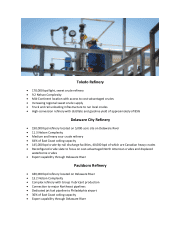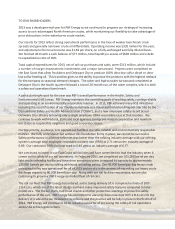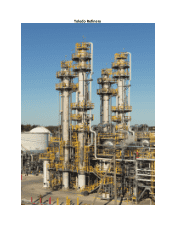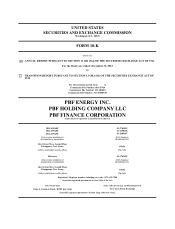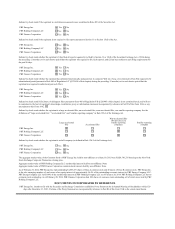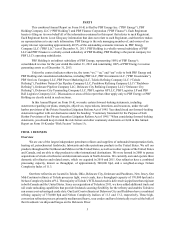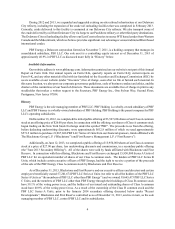PBF Energy 2013 Annual Report Download - page 13
Download and view the complete annual report
Please find page 13 of the 2013 PBF Energy annual report below. You can navigate through the pages in the report by either clicking on the pages listed below, or by using the keyword search tool below to find specific information within the annual report.6
Recent Developments
On January 6, 2014, we completed a public offering of 15,000,000 shares of our Class A common stock at
a price of $28.00 per share, less underwriting discounts and commissions, in a secondary public offering (the
"January 2014 Secondary Offering"). All of the shares were sold by funds affiliated with Blackstone and First
Reserve. In connection with this offering, Blackstone and First Reserve exchanged 15,000,000 Series A Units of
PBF LLC for an equivalent number of shares of our Class A common stock, which increased PBF Energy's interest
in PBF LLC to approximately 56.4%. The holders of PBF LLC Series B Units, which include certain executive
officers of PBF Energy, had the right to receive a portion of the proceeds of the sale of the PBF Energy Class A
common stock by Blackstone and First Reserve. Completion of the January 2014 Secondary Offering is estimated
to increase our tax receivable agreement liability to $439.6 million due to the tax benefit expected to be generated
as a result of the exchange in connection with the secondary offering and the corresponding tax benefits expected
to be generated in future years from this transaction.
Refining Operations
We own and operate three refineries, all located in regions with currently favorable market dynamics where
finished product demand exceeds operating refining capacity. We produce a variety of products at each of our
refineries, including gasoline, ULSD, heating oil, jet fuel, lubricants, petrochemicals and asphalt. We sell our
products throughout the Northeast and Midwest of the United States, as well as in other regions of the United
States and Canada, and are able to ship products to other international destinations.
Delaware City Refinery
Acquisition and Re-Start. Through our subsidiaries, Delaware City Refining and Delaware Pipeline
Company LLC, we acquired the idle Delaware City refinery and its related assets, including a petroleum product
terminal, a petroleum products pipeline and an electric generation facility, on June 1, 2010 from affiliates of Valero
for approximately $220.0 million in cash, consisting of approximately $170.0 million for the refinery, terminal
and pipeline assets and $50.0 million for the power plant complex located on the property.
At the time of acquisition, we reached an agreement with the State of Delaware that provided for a five-
year operating permit and up to approximately $45.0 million of economic support to re-start the facility, and
negotiated a new long-term contract with the relevant union at the refinery. As of December 31, 2013, we had
received $39.4 million in economic support from the State of Delaware under this agreement. We believe that the
refinery’s ability to process lower quality crudes allows us to capture a higher margin as these lower quality crudes
are typically priced at discounts to benchmark crudes, and to compete effectively in a region where product demand
currently significantly exceeds refining capacity.
We restarted the Delaware City Refinery in October 2011. Since our acquisition through December 31,
2013, we have invested more than $700.0 million in turnaround and re-start projects at Delaware City, as well as
in the recent strategic development of crude rail unloading facilities. In May 2012, we commenced crude shipments
via rail into a newly developed crude rail unloading facility at our Delaware City refinery. We have expanded and
upgraded the existing on-site railroad infrastructure, including the expansion of the crude rail unloading facilities
which, as of February 2013 were capable of discharging approximately 110,000 bpd, consisting of 40,000 bpd of
heavy crude oil and 70,000 bpd of light crude oil. However, due to greater operating efficiency, discharge capacity
for light crude oil at our dual-loop track has increased from 70,000 bpd to approximately 105,000 bpd. In conjunction
with the development of our rail crude unloading facilities at Delaware City, we constructed a railcar storage yard
with capacity for 330 railcars that is integral to railcar staging and storage and helps facilitate daily rail traffic at
the refinery. We are also adding additional unloading spots to the dual-loop track to increase unloading capabilities
at that facility to approximately 130,000 bpd. Also in 2013 we commenced a third rail crude offloading project
to add an additional 40,000 bpd of heavy crude rail unloading capability at the refinery, which is expected to be
completed by the second half of 2014. Completion of these additional rail projects is expected to increase our
discharge capacity of heavy crude oil from 40,000 bpd to 80,000 bpd and bring the total rail crude unloading


